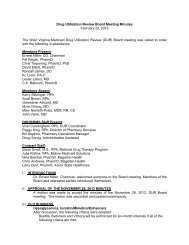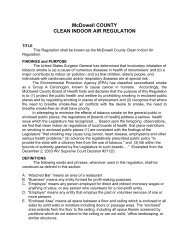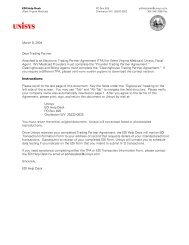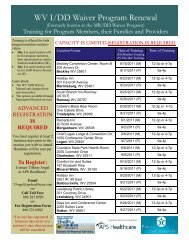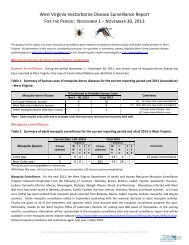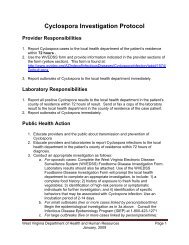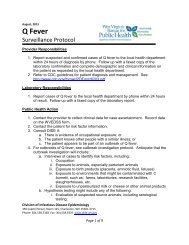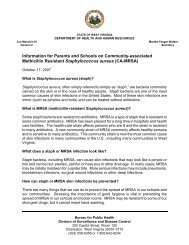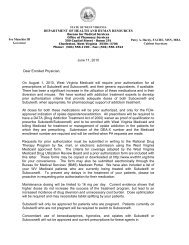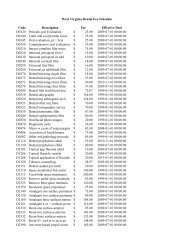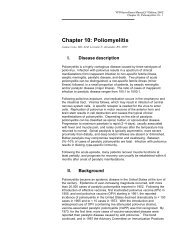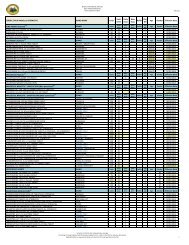Chapter 514 - Nursing Facility Services - DHHR - State of West ...
Chapter 514 - Nursing Facility Services - DHHR - State of West ...
Chapter 514 - Nursing Facility Services - DHHR - State of West ...
Create successful ePaper yourself
Turn your PDF publications into a flip-book with our unique Google optimized e-Paper software.
<strong>514</strong>.9.2 Transfer and Discharge PoliciesAccording to 42 CFR 483.12, transfer and discharge <strong>of</strong> an individual includes movement <strong>of</strong> aresident to a bed outside <strong>of</strong> the Medicaid-certified portion <strong>of</strong> the facility, whether that bed is inthe same physical plant. Transfer and discharge does not refer to movement <strong>of</strong> a resident to abed within the Medicaid-certified portion <strong>of</strong> the facility.The administrator or designee must permit each resident to remain in the facility, and not betransferred or discharged from the facility unless one <strong>of</strong> the following conditions is met:The transfer or discharge is necessary for the resident’s welfare when the needs <strong>of</strong> theresident cannot be met in the facility; orThe transfer or discharge is appropriate because the health <strong>of</strong> the resident has improvedsufficiently that the individual no longer meets the medical criteria for nursing facilityservices; orThe safety <strong>of</strong> individuals in the facility is endangered; orThe health <strong>of</strong> individuals in the nursing facility would otherwise be endangered; orThe resident has failed, after reasonable and appropriate notice, to pay for (or to have paidunder Medicaid) a stay at the nursing facility, including but not limited to, the amount <strong>of</strong>money determined by the financial eligibility evaluation as co-payment for the provision <strong>of</strong>nursing facility services; orThe facility ceases to operate; orThe resident is identified by the <strong>State</strong> and/or Federal certification agency to be in immediateand serious danger.Documentation must be recorded in the resident’s medical record by a physician <strong>of</strong> the specificreason requiring the transfer or discharge. Discharge documentation is required regardless <strong>of</strong>the reason for discharge.Before the nursing facility transfers or discharges a resident, the administrator or designee mustnotify the resident and/or the responsible party verbally and in writing, in a language that isunderstandable to the parties, <strong>of</strong> the intent and reason for transfer or discharge. The sameinformation must be recorded in the resident’s medical record and a copy <strong>of</strong> this written noticemust be sent to the <strong>State</strong> Long-Term Care Ombudsman or his/her designee. Except in the case<strong>of</strong> immediate danger to the resident and/or others as documented, the notice <strong>of</strong> transfer ordischarge must be provided at least 30 days prior to the anticipated move to ensure a safe andorderly discharge to a setting appropriate to the individual’s needs.Department <strong>of</strong> Health and Human Resources <strong>Chapter</strong> <strong>514</strong>: <strong>Nursing</strong> <strong>Facility</strong> <strong>Services</strong> Page 42January 1, 2013DISCLAIMER: This manual does not address all the complexities <strong>of</strong> Medicaid policies and procedures,and must be supplemented with all <strong>State</strong> and Federal Laws and Regulations.




